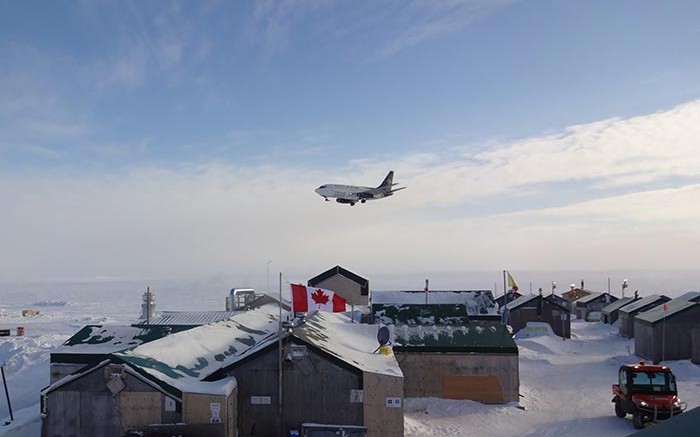Sabina Gold & Silver (TSX: SBB) expects to submit a final environmental impact statement (EIS) on its Back River gold project in southwestern Nunavut by mid-year.
Back River is a series of gold deposits in banded iron formation 520 km northeast of Yellowknife and 75 km southwest of Bathurst Inlet. The property’s flagship Goose and George deposits also lie 50 km southeast of Xstrata Zinc’s Hackett River silver-zinc project.
Sabina completed a prefeasibility study on the project a year ago and submitted a draft EIS to the Nunavut Impact Review Board in January 2014, after which the company responded to 600 comments and questions on topics ranging from caribou and marine shipping to socio-economic effects and tailings storage.
The company’s responses were reviewed in a technical and pre-hearing conference in November last year, a key step in the permitting process. Sabina says the information and guidance the company acquired during the conference process that month gave it an excellent understanding of what work needs to be done to enhance the final document.
“We’ve heard from everybody and we’re working away on it, and there’s nothing that anyone is fretting about,” Sabina president and CEO Robert Pease says. “There are solutions to the issues.”
Pease points out that he has had experience permitting projects and dealing with complex interactions with First Nations, and doesn’t expect permitting Back River will be problematic. In 2006, Pease formed Terrane Metals and advanced its Mt. Milligan gold-copper project northwest of Prince George through exploration, development and permitting. Construction began in the first half of 2010 and Terrane Metals was acquired by Thompson Creek Metals (TSX: TCM; NYSE-TC) in late 2010 for $700 million, prompting the B.C. Mining Association of to name Pease the province’s mining person of the year.
“That project was seen as very, very challenging, and we got it permitted,” Pease recalls. “We were the first major greenfields project to get a mining certificate in B.C.”
Sabina initiated the permitting process at Back River in 2012, and estimated in January that it has held 144 sessions reaching out to potentially affected communities, and participated in 195 meetings with all levels of the federal and territorial governments.
A technical review will follow the EIS, and Sabina estimates that hearings on the project will come later in the year. The final step in the process is a recommendation from the Nunavut Impact Review Board.
Sabina says management is informally exploring project financing alternatives and opportunities, and notes that with the completion of a feasibility study in the first half of 2015, along with the final EIS, the project will be “substantively de-risked.”
Sabina completed an updated resource estimate in March 2014 and got to work on a feasibility study in June. The resource estimate outlined 10.4 million tonnes grading 5.2 grams gold per tonne for 1.76 million contained oz. gold in the measured category, and 17.9 million tonnes averaging 6.1 grams gold for 3.54 million contained oz. gold in the indicated category. Inferred resources add 8.2 million tonnes of 7.3 grams gold for 1.93 million contained oz. gold.
An October 2013 prefeasibility study envisioned conventional open-pit operations supplemented by underground development and a single tailings storage facility during the mine’s life. The prefeasibility contemplated a 5,000-tonne-per-day operation producing 287,000 oz. gold a year over an 8.4-year mine life, but the company said in October 2014 that it is analyzing a scenario that would raise throughput by up to 20% for most of the mine life.
“What separates us from the average project is grade,” Pease explains. “We’re just under six grams gold per tonne, and we have the benefit of a series of three main open pits.”
The first half of the mine life, or between seven and nine years, will be dominated by open-pit mining, with the rest shifting to an underground operation. “It’s a big project, and we’re confident that it’s a good project,” Pease says, adding that “there are lots of areas from our previous studies that we’ve been able to optimize, and we’re working away on that.”
In a Jan. 12 research note, Andrew Kaip of BMO Capital Markets remarked that Sabina showed “positive progress on the permitting front,” but added that “the proposed development timeline may be impacted by the currently challenging financing environment.”
Pease concedes that it’s a tough time in the mining sector and “financial markets are just awful,” but says that working in Nunavut means that “you have to live within the constraints of what location and climate allow you to do.”
He says that “we’re not rushing anything. We’re really one of the only resource projects of any commodity right now in the North that is “real” in terms of its future … we’re doing fine.”


Be the first to comment on "Sabina pushes permitting forward at Back River"